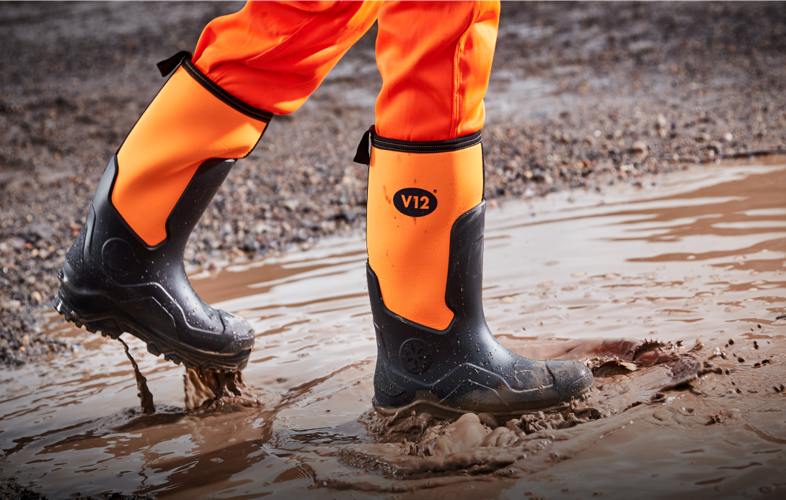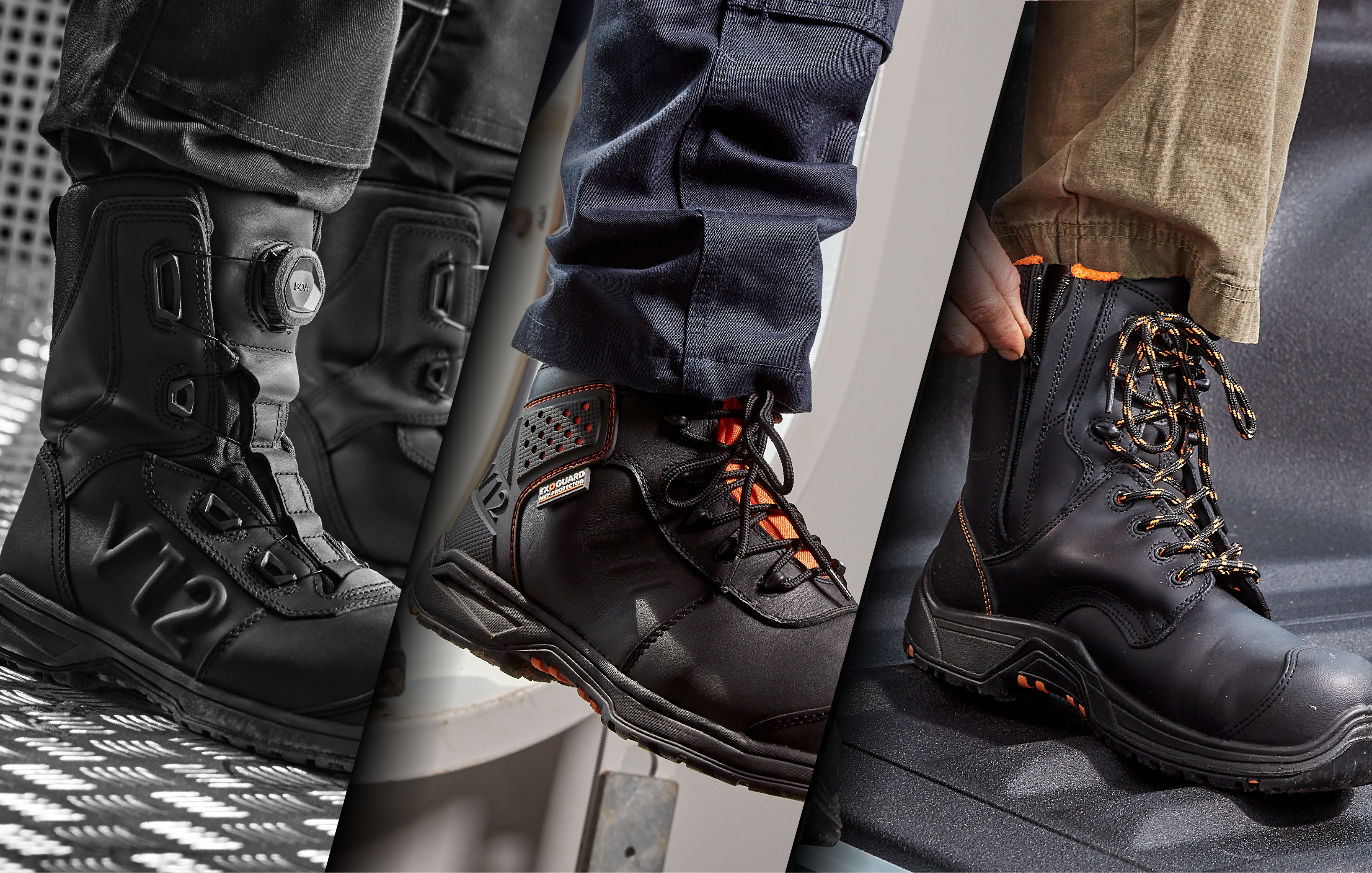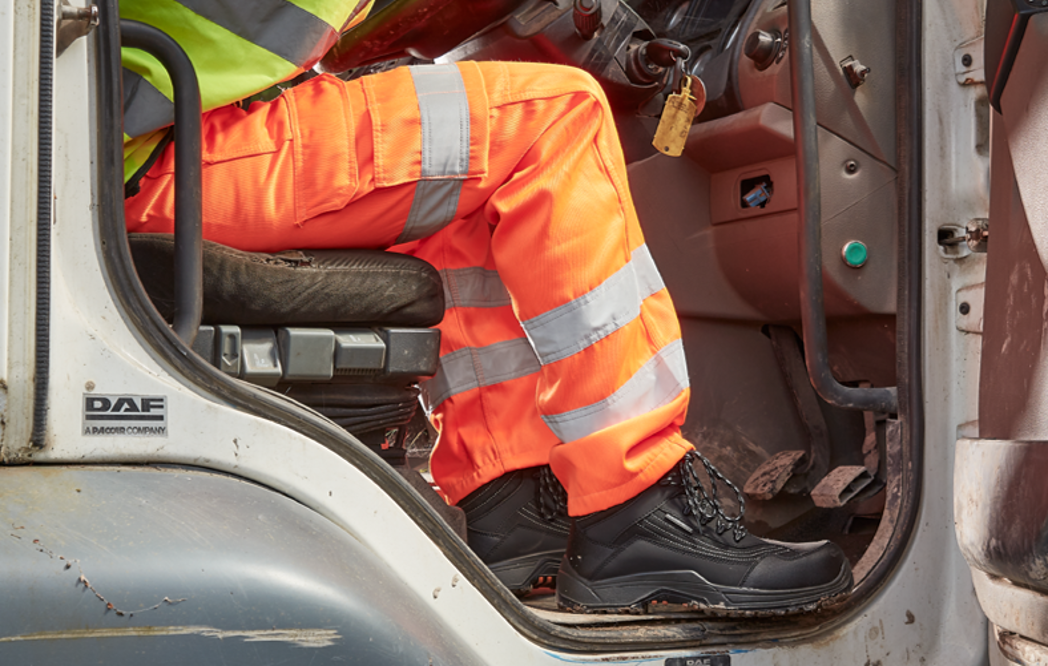We all want warm feet. In fact, having cold feet isn't just an inconvenience, it can have a negative short and long-term impact. That's why safety boots that provide protection from the cold can be a huge benefit to many wearers in a range of environments.
If you want to avoid cold feet and focus on the job in hand, what Winter work boots should you look for? For all the information you need to acquire toasty toes, read on...
WHY ARE COLD FEET A PROBLEM?
IT AFFECTS PRODUCTIVITY AND CONCENTRATION
The distraction of cold feet can hinder productivity because when our body temperature falls, we have to use more energy to keep warm. This then leaves less energy available for us to work – essentially, giving us less brain and physical power. Several studies have also shown that people who are cold at work tend to be less creative, make more errors and have reduced powers of problem solving.
...WHICH AFFECTS SAFETY
Let’s remember, if you’re wearing a pair of safety boots, it’s likely that you’ll be working in an environment featuring hazards such as falling objects or slippery surfaces. You might also be in charge of heavy equipment, and if you’re working on repairs or maintenance, you will be responsible for many other people's safety too. So, a drop in concentration means a drop in safety and a rise in risk for you and potentially many others.
IT AFFECTS DIABETES
Feet and diabetes are significantly linked, but when cold feet enter the equation, things can become even more problematic. Those with diabetes can suffer from poor circulation, which can make feet cold - so if they are working in low temperatures, this can be doubly problematic. Furthermore, because of the nerve and circulation issues such as numbness (known as peripheral neuropathy) that diabetes can cause, it’s even more important that wearers living with diabetes have foot protection against extreme cold.
Want to find out more about the right safety boots for those with diabetes? All you need to know is right here.
 WHEN WOULD YOU NEED THERMAL INSULATION IN A SAFETY BOOT?
WHEN WOULD YOU NEED THERMAL INSULATION IN A SAFETY BOOT?
Keeping your feet warm when working outside is always preferable, but there are some circumstances where keeping cold out is very important.
WEATHER CONDITIONS
If you:
- Work outside for long periods
- Work at typically colder hours such as night shift work
- Work at height (where wind chill is greater)
APPLICATION
When you:
- Use ladders (where numb feet are incredibly dangerous)
- Drive heavy vehicles (where full feeling in your feet is essential for operating pedals)
HEALTH
If you:
- have an existing condition that might affect the feeling in your feet such as diabetes
- Experience poor circulation
WARM FEET - WHAT TO LOOK FOR IN A SAFETY BOOT
THERMAL LINING BRANDS
Thinsulate
Thinsulate is a synthetic fibre material with excellent thermal insulating properties. Thinsulate works by trapping air molecules in its fibres, which prevents cold air molecules from outside getting into the boot. This barrier of molecules also prevents the warm air already in the boot from escaping. Warmth in, cold out = toasty feet.
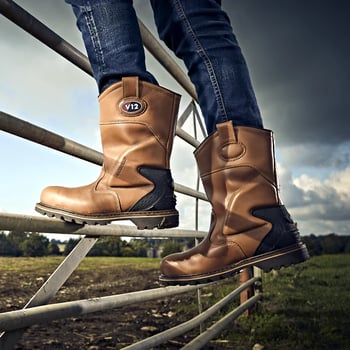
Thinsulate is very popular because these synthetic fibres are extremely small, trapping air and retaining warmth but simultaneously remaining a thin rather than bulky material. And because the material isn’t thick, it’s effective in regulating the temperature inside the boot.
Thinsulate is also popular because it’s a very durable lining; it can cope with frequent use and regular washes without getting worn or damaged, and it even retains its insulating power when it’s wet.
Pictured: The V1250 Tomahawk features a Thinsulate temperature-regulating lining, so it keeps feet warm and ensures the cold stays out, even in extremely low temperatures.
Find out more about V1250 Tomahawk in the video below.
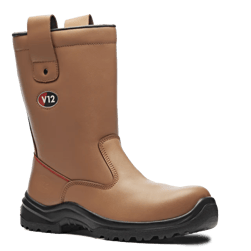 Shearling lining is when wool is attached to leather. Because of this, fleecy linings like Shearling are both comfortable and warm, but tend also to be thicker than Thinsulate material, having what’s known as a higher thickness to insulation ratio.
Shearling lining is when wool is attached to leather. Because of this, fleecy linings like Shearling are both comfortable and warm, but tend also to be thicker than Thinsulate material, having what’s known as a higher thickness to insulation ratio.
The V6816.01 Polar STS (pictured) features an ultra-warm synthetic fleece lining for comfort and protection against the cold, along with an underfoot warm lining for further cold protection. As a result, Polar has passed the EN ISO 20345:2011 standard cold insulation test (CI), so its thermal performance is top-level and makes it an excellent winter work boot. Explore this super warm style here.
A lot of renowned brands such as The North Face use PrimaLoft, a lightweight synthetic insulating material made of polyester fibre and nylon.
PrimaLoft‘s tiny fibres imitate the soft and thin down in a fleece. Because of this, it performs quite similarly to down, giving comfort and warmth - and many also like that PrimaLoft's lining is breathable and has good bounce back after it’s been compressed through use.
WHAT ELSE CAN GIVE MY BOOT INSULATION?
A COMPOSITE TOECAP AND MIDSOLE
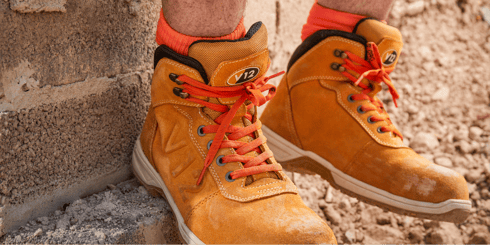 An insulating lining isn’t the only feature of a safety boot that can offer feet protection from the cold. A composite toecap and midsole also aid warm feet, because they don’t conduct the cold.
An insulating lining isn’t the only feature of a safety boot that can offer feet protection from the cold. A composite toecap and midsole also aid warm feet, because they don’t conduct the cold.
A steel toecap boot left in the porch or hallway during a chilly night would be colder in the morning as the steel would have retained the cold. A boot with a composite toecap would not conduct the cold, so the boot would be at a higher temperature.
Pictured: The V2150 BoB boot has a lightweight composite toecap.
Interested in composite vs steel in safety footwear? Read our blog on the advantages of composite toecaps here.
NEOPRENE
This material, commonly used for the uppers for wellingtons is a durable and stretchy material which provides breathability in warm conditions and thermal insulation when it’s cold.
Groundworker (pictured) is V12’s non-cracking safety wellington that’s tough, comfortable and flexible - but also extremely lightweight compared to other wellingtons on the market. It gets its thermal insulation from its neoprene upper, a much warmer material than the standard rubber wellingtons. This combined with its protective outsole that resists cold down to –17° means it’ll keep feet consistently warm even in the harshest temperatures.
Find out more about V2110 Groundworker here.
SOCKS
If you’re serious about keeping your feet warm in cold conditions, you should be thinking about socks. However, to keep out the cold, thin polyester or nylon material won’t cut it. To complement a boot’s thermal lining, thick, durable high-quality work socks are needed.
All socks in the V12 range are comfortable, durable and warm thanks to the luxury cotton blend and loop pile stitching. View the range here to add another layer of warmth to your feet.
Pictured: V12's warm and durable VSOK5S Work Socks. With thick luxury cotton, no-rub seams and a reinforced heel and toe, they are great for maintaining comfort as temperatures fall.
CHECKLIST:
FOR WARMER FEET, YOU SHOULD CHOOSE:
- A safety boot with a durable thermal lining such as fleece, or an insulating lining such as Thinsulate
- A boot with a composite component such as a toecap and/or midsole
YOU SHOULD AVOID:
- Steel toecaps and midsoles
- Thin socks
Hopefully now you'll feel confident about whether or not you need added protection from the cold in your boots.
FIND THE RIGHT BOOT
Use our Boot Finder to get the right protection from the elements. Simply click on 'My footwear needs to keep my feet warm' in the Temperature section - along with any other safety requirements you need from your work boots - and in a few clicks, you'll get our expert recommendation.
Click below to get going.

.png)
